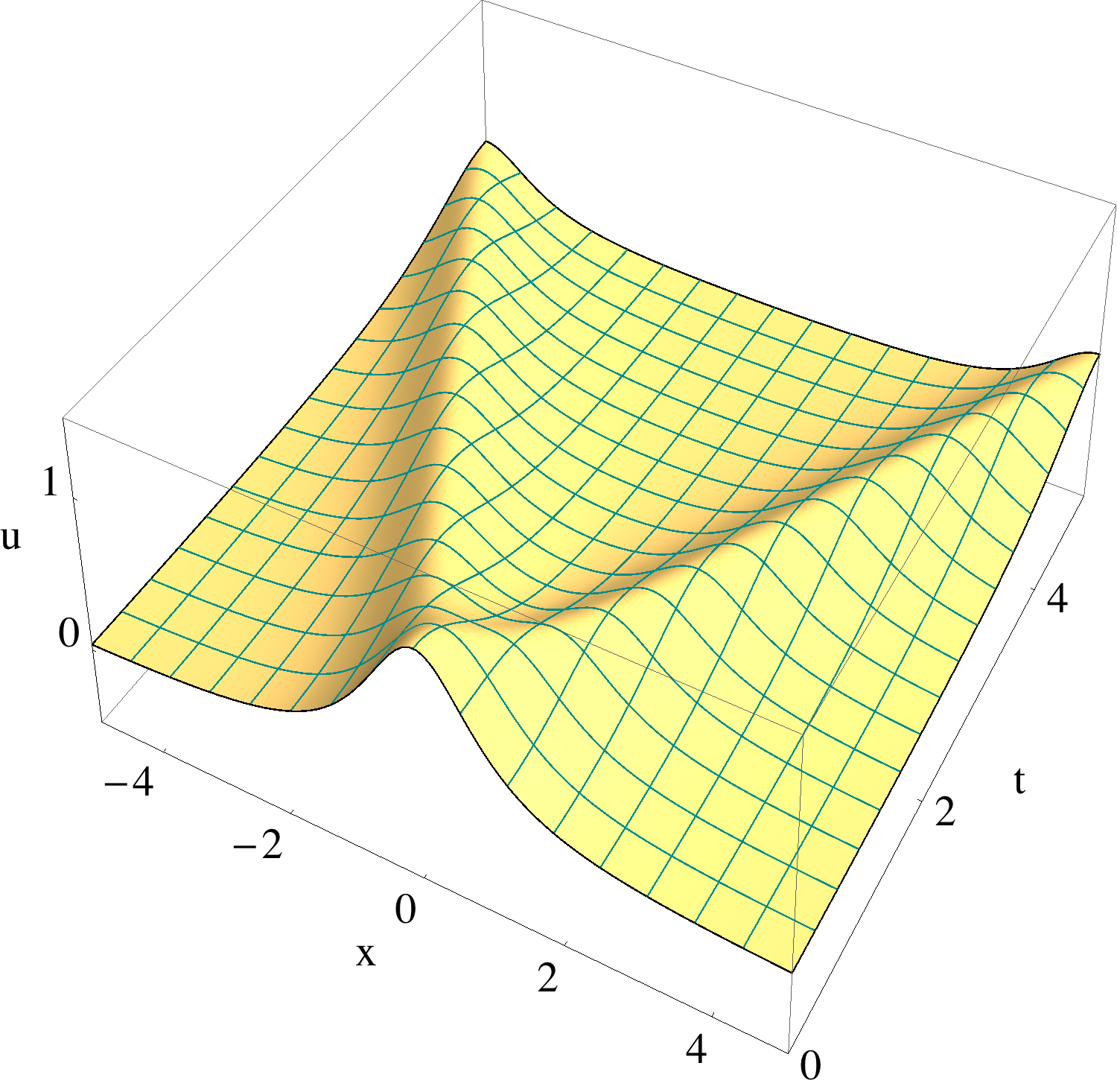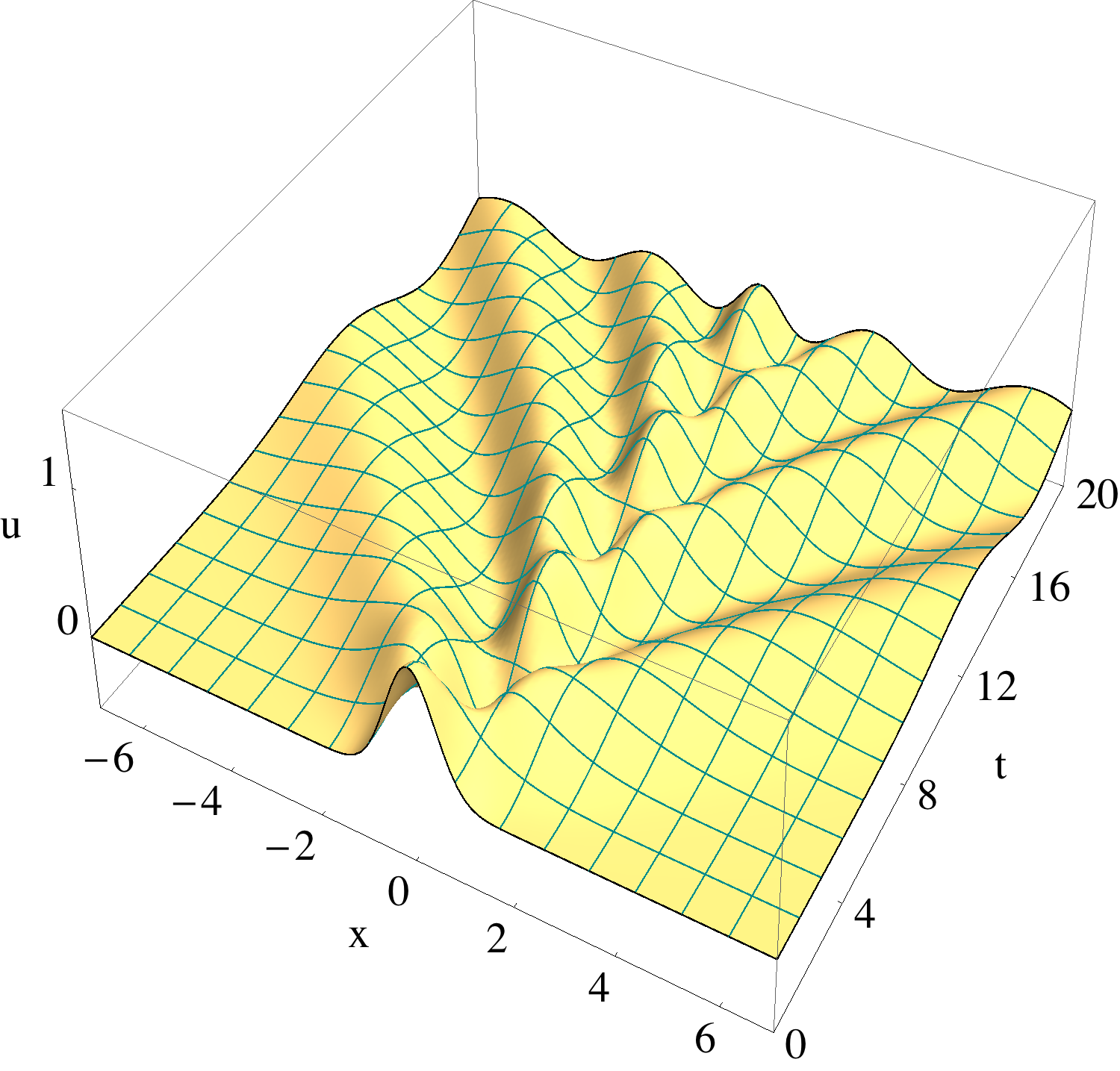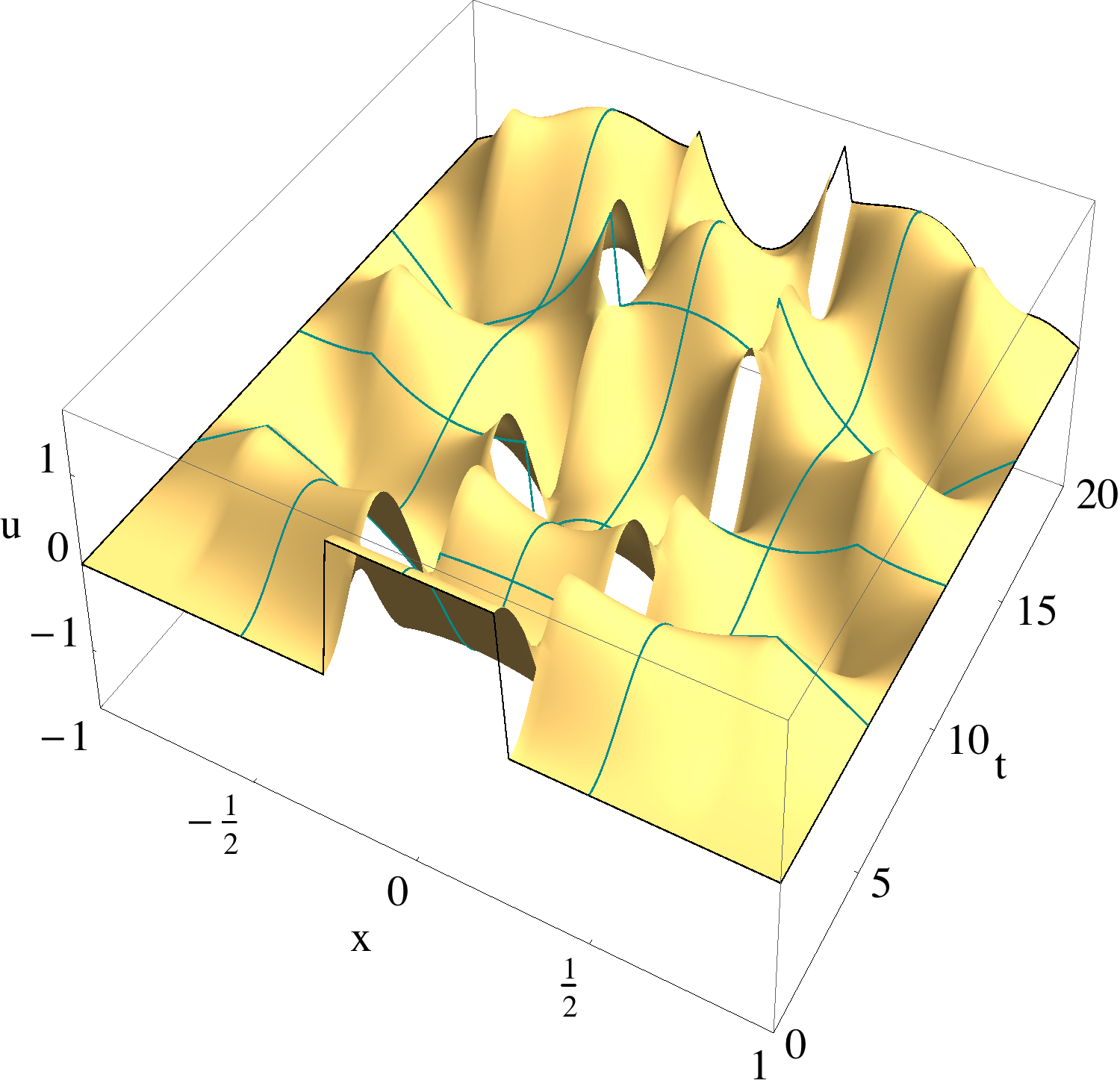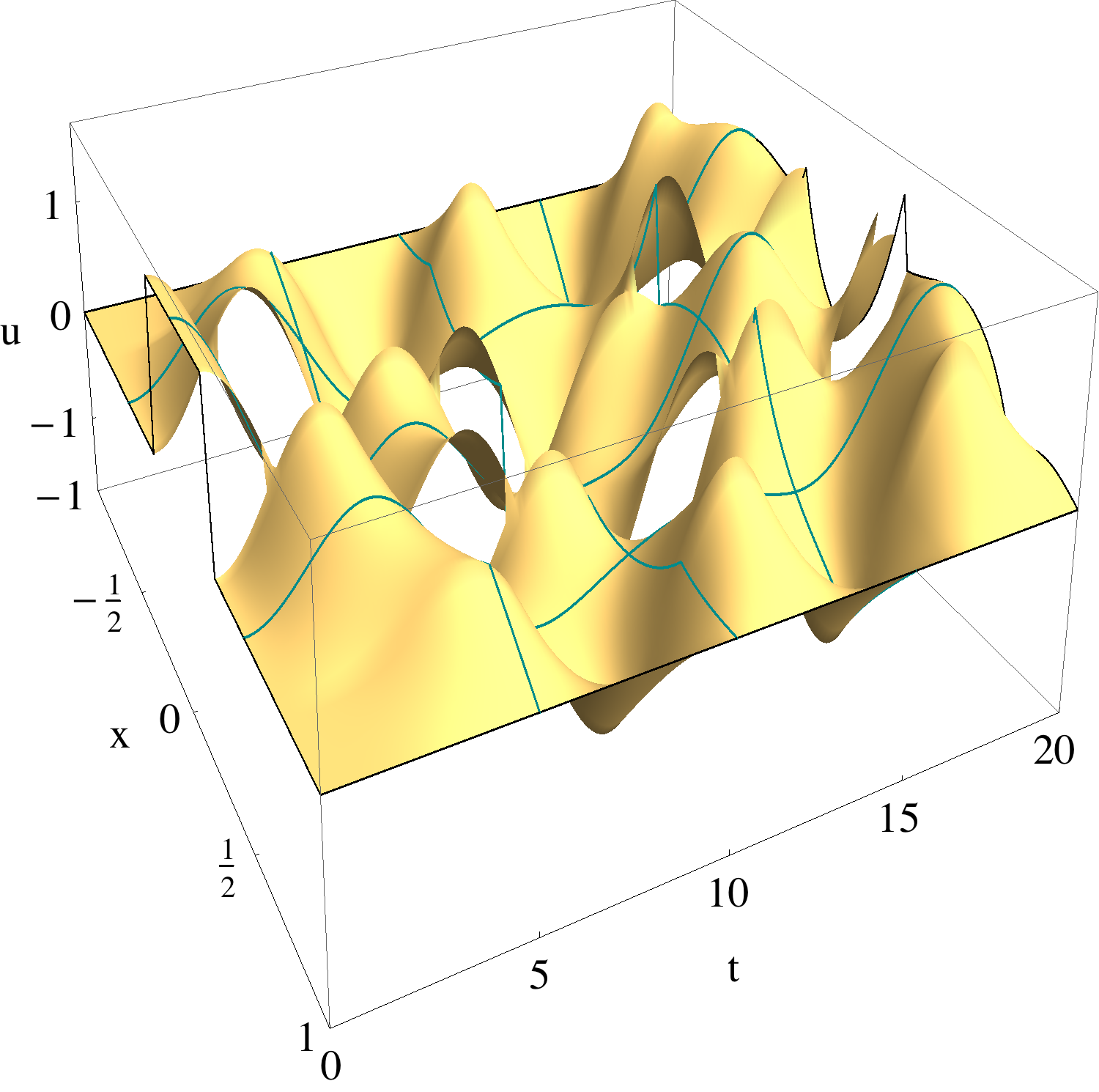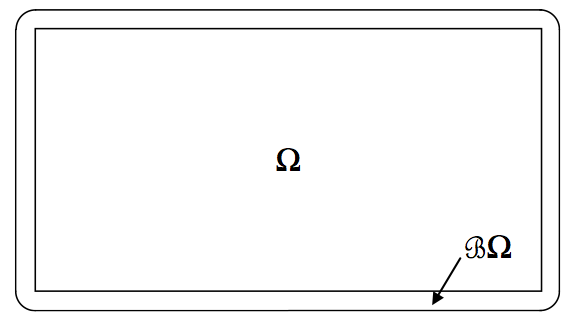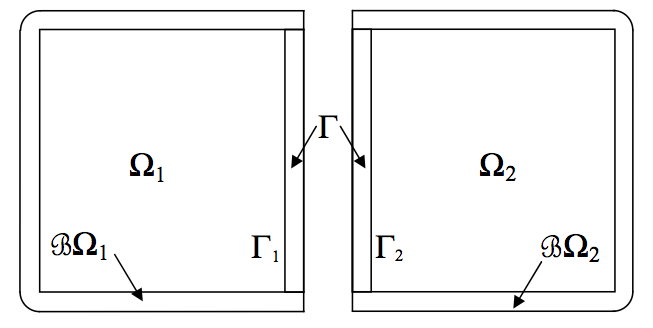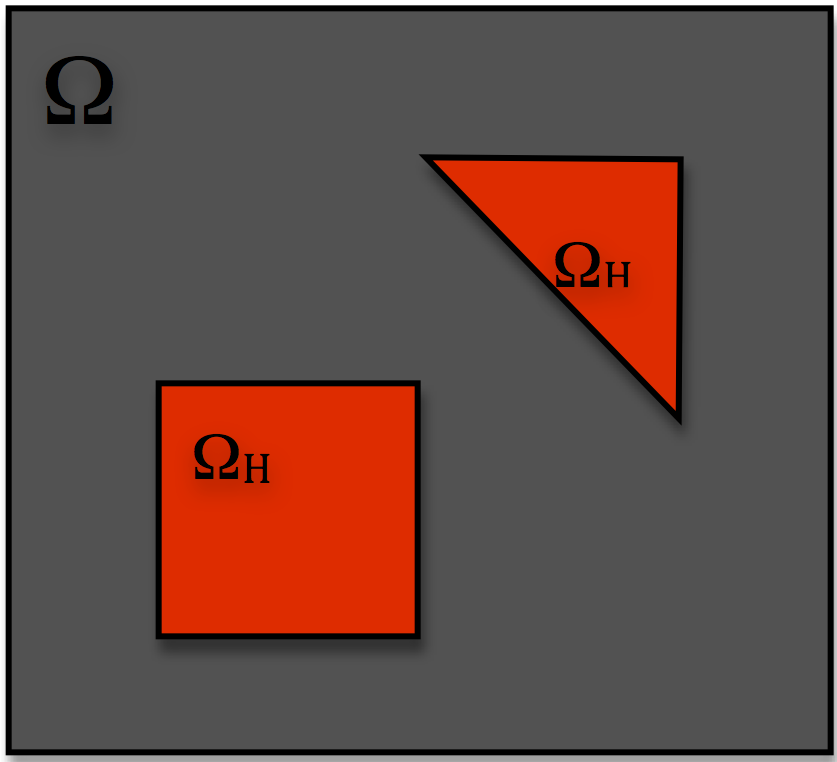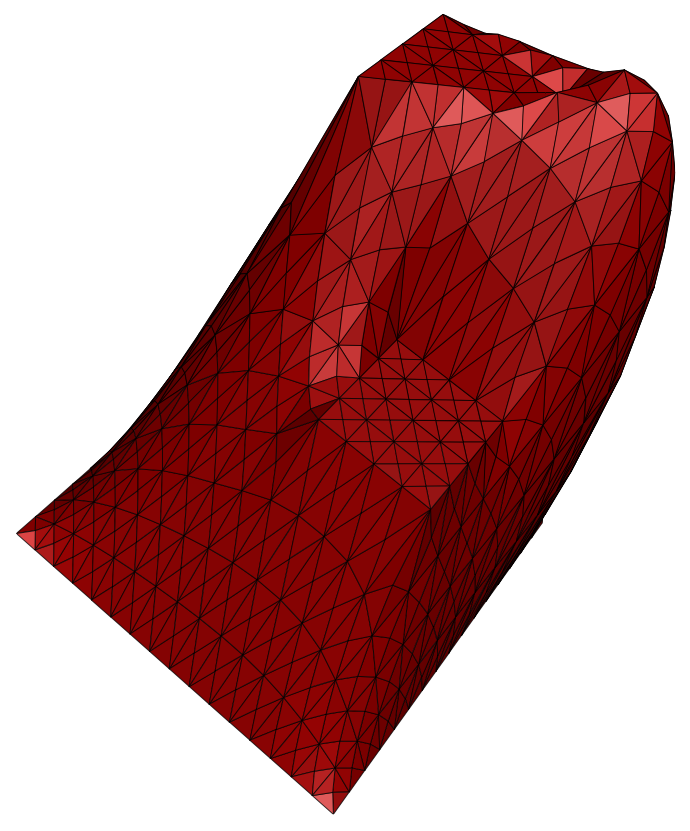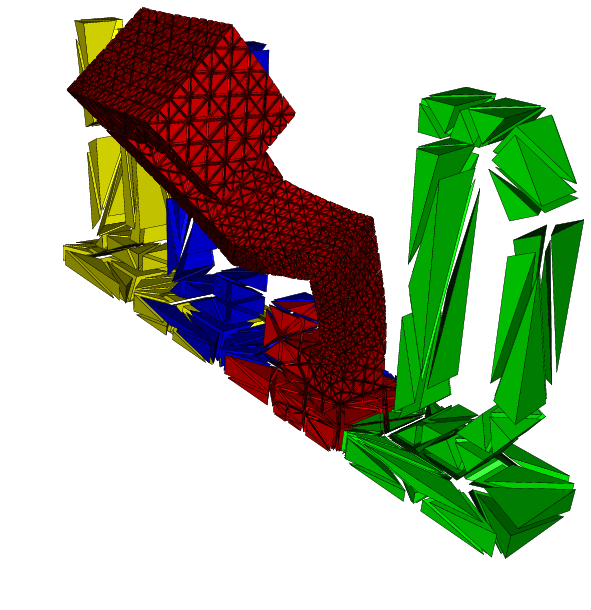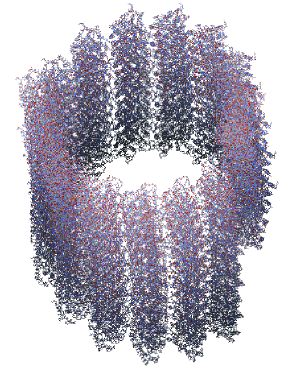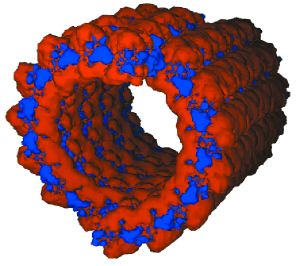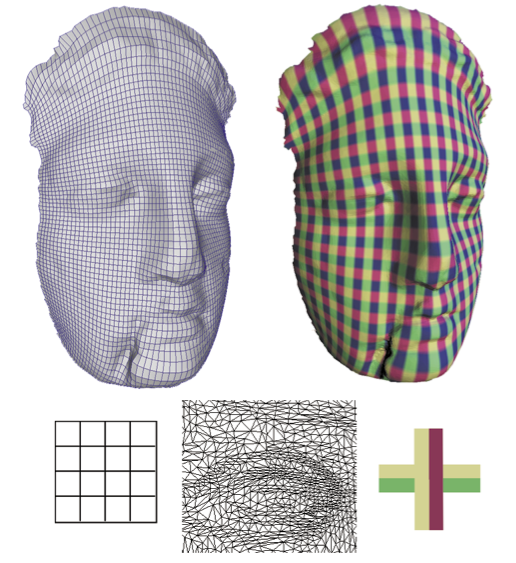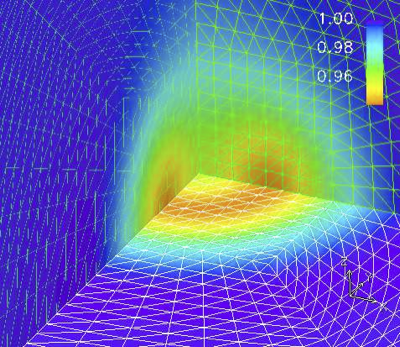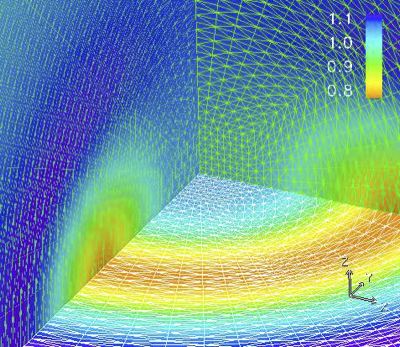Research interests
I work in the areas of numerical analysis, scientific computing, and numerical linear algebra. My research interests include:
- Nonlocal problems, peridynamics, local boundary conditions for nonlocal problems, preconditioning for peridynamics, scalable solvers for nonlocal problems,
- preconditioning, iterative solvers, numerical solutions to partial differential equations,
- multilevel preconditioning, multigrid, preconditioning under adaptive mesh refinement,
- robust preconditioning for high-contrast heterogeneous media,
- Krylov subspace solvers.
Research application areas
My research has been used to solve modeling and simulation problems in the application areas that include:
- Biophysics,
- Computer graphics,
- Geosciences,
- Numerical relativity,
- Solid mechanics.
Overview
My research concentrates on rigorous numerical methods for solving nonlocal problems and partial differential equations (PDEs) with emphasis on preconditioning. The design, construction, analysis, and implementation of numerical methods that are optimal, robust, and scalable are at the heart my research. These features are critically needed in practically any field because even in modern day simulations, preconditioners and solvers usually take more than half the computational time and storage. I am interested in the supporting mathematical and algorithmic tools from numerical analysis, scientific computing, and numerical linear algebra. More recently, I study in the area of nonlocal wave propagation utilizing tools from operator theory and computational methods to solve the related integral equations.
1 Nonlocal problems
There are noteworthy developments in the area of nonlocal modeling.
For instance, crack propagation and viscoelastic damping are modeled
by peridynamics (PD) and fractional derivatives, respectively, both
of which are nonlocal. Similar classes of operators are used in
numerous applications such as nonlocal diffusion, population models,
image processing, particle systems, phase transition, and coagulation.
We study instances of successful modeling by nonlocal theories of
phenomena that cannot be captured by local theories. PD is a nonlocal
extension of continuum mechanics and is capable of quantitatively
predicting the dynamics of propagating cracks, including bifurcation.
Its effectiveness has been established in sophisticated applications
such as successful description of results of Kalthoff-Winkler
experiments of the fracture of a steel plate with notches, fracture
and failure of composites, nanofiber networks, and polycrystal
fracture.
1.1 Incorporating local boundary conditions into nonlocal problems
Considering wave phenomena only partially successfully described by a classical wave equation, it seems reasonable to expect that a more successful model can be obtained by employing the functional calculus of self-adjoint operators, i.e., by replacing the classical governing operator A by a suitable function f(A). Since classical boundary conditions (BCs) is an integral part of the classical operator, these BCs are automatically inherited by f(A). In this way, we vision to model wave phenomena by using appropriate f(A) and, as a consequence, need to study the effect of f(A) on the solutions. One advantage of our approach is that every symmetry that commutes with A also commutes with f(A). As a result, required invariance with respect to classical symmetries such as translation, rotation and so forth is preserved.
One of our major results is the finding that, in ℝn, the governing operator of PD equation is a function of the governing operator of classical elasticity. This result opened the path to the solution of a long standing and major open problem of peridynamics, namely, the introduction of local boundary conditions into the theory. We solve this problem and eliminate the ``dreaded'' boundary effects seen in PD. The approach is not limited to PD, the abstractness of the theoretical methods used allows generalization to other nonlocal theories. Our approach presents a unique way of combining the powers of abstract operator theory with numerical computing. We complement our approach with comprehensive numerical treatment.
Related publications
- [AkGa2018] B. Aksoylu and G. A. Gazonas, Inhomogeneous local boundary conditions in nonlocal problems, 6th European Conference on Computational Mechanics (ECCM 6) and 7th European Conference on Computational Fluid Dynamics (ECFD 7), (ECCOMAS2018) 11-15 June 2018, Glasgow, UK.
- [AkCeKi2018b] B. Aksoylu, F. Celiker, and O. Kilicer, Nonlocal problems with local boundary conditions: An overview, Handbook of Nonlocal Continuum Mechanics for Materials and Structures, Voyiadjis G. (eds), (2018), pp. 1-38, Springer, Cham, doi.
- [AkCeKi2018a] B. Aksoylu, F. Celiker, and O. Kilicer, Nonlocal problems with local boundary conditions in higher dimensions, Advances in Computational Mathematics, (2018), in press, doi.
- [AkCe2017] B. Aksoylu and F. Celiker, Nonlocal problems with local Dirichlet and Neumann boundary conditions, Journal of Mechanics of Materials and Structures, 12(4) (2017), pp. 425-437, doi.
- [AkBeCe2017b] B. Aksoylu, H.R. Beyer and F. Celiker, Application and implementation of incorporating local boundary conditions into nonlocal problems, Numerical Functional Analysis and Optimization, 38(9) (2017), pp. 1077-1114, doi.
- [AkBeCe2017a] B. Aksoylu, H.R. Beyer and F. Celiker, Theoretical foundations of incorporating local boundary conditions into nonlocal problems, Reports on Mathematical Physics, 40(1) (2017), pp. 39-71 doi.
- [BeAkCe2016] H.R. Beyer, B. Aksoylu and F. Celiker, On a class of nonlocal wave equations from applications, Journal of Mathematical Physics, 57(6) (2016), 062902, doi.
1.2 Variational theory and domain decomposition for nonlocal problems
In AkMe2010, we establish a variational
framework to study well-posedness of governing equations based on
nonlocal diffusion. We utilize a weak formulation of the underlying
problem. We give nonlocal Poincaré type inequalities that reveal
the horizon
δ (the size of nonlocal interaction)
quantification. This spectral equivalence
with explicit δ-quantification leads to a mesh
size independent upper bound for the condition number of an underlying
discretized operator:
λK ≤
a(u,u) ⁄
∥u∥2L2(Ω)
≤
λK,
κ(K) ≲ δ-2
Later, in [AkUn2014], we investigate the
sharpness of this δ-quantification.
In [AkPa2011], we give the first domain decomposition study for nonlocal problems. We extend iterative substructuring methods to nonlocal settings and characterize the impact of nonlocality upon the scalability of these methods by characterizing the conditioning of the resulting Schur complement. Furthermore, we introduce a nonlocal two-domain variational formulation utilizing nonlocal transmission conditions, and prove equivalence with the single-domain formulation, a first step in establishing rigorous theory for nonlocal domain decomposition methods.
Related publications
- [AkPa2011] B. Aksoylu and M. L. Parks, Variational theory and domain decomposition for nonlocal problems, Applied Mathematics and Computation, 217 (2011), pp. 6498-6515, doi.
- [AkMe2010] B. Aksoylu and T. Mengesha, Results on nonlocal boundary value problems, Numerical Functional Analysis and Optimization, 31 (2010), pp. 1301-1317, doi.
1.3 Sharp condition number bounds for nonlocal operators
In [AkUn2014], we solve a challenging open problem: What is the sharp quantification of the condition number of the involved operators with respect to the underlying parameters? When we study the existing quantifications, we realize that they are not sharp. We use two types of micromodulus functions; singular and integrable. Singular kernels lead to fractional Sobolev spaces Hs(Ω), s ∈ (0,1), to which jump discontinuities belong.
The following spectral bounds we obtain, respectively,
provide sharp δ-, h-, and s-quantifications of the
extremal eigenvalues for the underlying (both for piecewise linear and
piecewise constant finite element) discretizations:
ch ≤
λa ≤
c
(5h δ-2 - 6 h2 δ-3)
ch ≤
λb ≤
c
(8(21-2s - 1) ⁄ s(1-2s)(3-2s) h1-2s
δ-(2-2s) - 8(1-s) ⁄ (3s) h δ-2).
Our results indicate that there are two terms involved in the
quantification of the maximal eigenvalue: one positive and one
negative. We discover that the available quantifications in the
literature are able to recover only the positive term. Hence, what
makes our quantifications sharp was the discovery of the negative
term. We are even able to find the asymptotic value of
c by using Toeplitz matrix techniques;
c → π2 as
Related publications
- [AkUn2014] B. Aksoylu and Z. Unlu, Conditioning analysis of nonlocal integral operators in fractional Sobolev spaces, SIAM Journal on Numerical Analysis, 52 (2014), pp. 653-677, doi.
2. Robust preconditioning for high-contrast media
For elliptic PDEs with high-contrast coefficients, we construct preconditioners that are as algebraic as possible in order to accommodate underlying complex geometry such as reservoirs. Algebraic multigrid (AMG) preconditioner is known to work well for similar class of problems that involve high-contrasts. However, there is no rigorous proof why AMG treats such problems well. We aim to construct rigorously justified algebraic preconditioners that are robust simultaneously with respect to mesh and contrast size.
First, we establish the contrast size robustness in [AkKl2009] [AkKl2007] High contrasts are commonly found in applications, for instance, in reservoir simulations the contrast can be of size O(1018). We study diffusion, biharmonic, and Stokes equations with high-contrast coefficients. We achieve a desirable preconditioning design goal; the same family of preconditioners can be used for different PDEs with varying discretizations. For diffusion equation, linear finite element [AkGrKlSc2008] and finite volume [AkYe2010] discretizations and for biharmonic plate equation, HCT discretization [AkYe2011], and for Stokes equation [AkUn2013], [AkUn2014_stokes], Q2-Q1 (Taylor-Hood element) and stabilized Q1-Q1 finite elements are used. The same family can be extended to high-contrast PDEs of order 2k, k>2. We utilize singular perturbation analysis (SPA) to analyze the limiting behaviours of the underlying discretizations such as low-rank perturbations and the rate of convergence.
The broadness of the applicability of our preconditioner has been achieved by SPA as it provides valuable insight into qualitative nature of the underlying PDE. We can fully reveal the asymptotic behaviour of the solution over the high-contrast regions. This information leads to a characterization of the limit of the underlying discretized inverse operator. We prove that the solution over the high-contrast island converges to a linear and constant polynomial in the case of biharmonic and diffusion equations, respectively. In general, for PDEs of order 2k, k ≥ 1, the solution over the high-contrast islands approaches a polynomial of degree k-1. By this result, we reveal fundamental qualitative features of the solutions of the high-contrast elliptic PDEs. The exploitation of these qualitative features yield the superior performance of our preconditioners.
Related publications
- [AkUn2014_stokes] B. Aksoylu and Z. Unlu, Robust preconditioners for the high-contrast Stokes equation, Journal of Computational and Applied Mathematics, 259 (2014), pp. 944-954, doi.
- [AkYe2011] B. Aksoylu and Z. Yeter, Robust multigrid preconditioners for the high-contrast biharmonic plate equation, Numerical Linear Algebra with Applications, 18 (2011), pp. 733--750, doi.
- [AkYe2010] B. Aksoylu and Z. Yeter, Robust multigrid preconditioners for cell-centered finite volume discretization of the high-contrast diffusion equation, Computing and Visualization in Science, 13 (2010), pp. 229-245, doi.
- [AkKl2009] B. Aksoylu and H. Klie, A family of physics-based preconditioners for solving elliptic equations on highly heterogeneous media, Applied Numerical Mathematics, 59 (2009), pp. 1159-1186, doi.
- [AkGrKlSc2008] B. Aksoylu, I. G. Graham, H. Klie, and R. Scheichl, Towards a rigorously justified algebraic preconditioner for high-contrast diffusion problems, Computing and Visualization in Science, 11 (2008) pp. 319-331, doi.
- [AkUn2013] B. Aksoylu and Z. Unlu, Numerical study of the high-contrast Stokes equation and its robust preconditioning, Advances in Applied Mathematics and Approximation Theory, Contributions from AMAT 2012, Springer Proceedings in Mathematics & Statistics, Anastassiou, George A.; Duman, Oktay (Eds.), 41 (2013), pp. 237-262. doi.
- [AkKl2007] B. Aksoylu and H. Klie, Physics-based preconditioners for solving PDEs on highly heterogeneous media, In proceedings of ICIAM 2007, Proceedings in Applied Mathematics and Mechanics, 7 (2007), pp. 1020703-1020704, doi.
- [AkKlWh2007] B. Aksoylu, H. Klie, and M. F. Wheeler, Physics-based preconditioners for porous media flow applications, University of Texas at Austin ICES Technical Report 07-08 (August, 2007). (Technical Report at ICES).
3. Rigorous treatment of diffusion equation with rough coefficients
The study of heterogeneity and its impact on the numerical solution of
PDEs heavily relies on structural understanding of the
qualitative nature of the underlying PDE operators and their
dependence on the coefficients. Our study [AkBe2010],
[AkBe2009]
provides the necessary generality and is beyond the classical analysis
done in Sobolev spaces, due the methods employed from operator
theory. We first reveal that the domain of the diffusion operator,
Aα := - div α grad, depends
heavily on the coefficients α where α comes from
the set
L ⊂ L∞.
For such rough coefficients, we
show that the traditional elliptic regularity fails to hold.
We prove that the first order (or the mixed) formulation of
Aα, Âα, provides an operator domain that is
independent of α. Hence, Âα remains defined for
asymptotic coefficients that are in the boundary of
∂L, i.e., α ∂L, for which
Aα is
ill-defined. Since a preconditioner is basically an approximate
inverse, we study boundary behaviour of
Aα-1 and prove its
sequential continuity for α ∈ ∂L. The
boundary values can be used as the dominant factor in a perturbation
expansion and the preconditioned operator becomes:
Aα-1 =
Aα∞-1 +
O(||α - α∞ || ),
Aα∞-1
Aα∞ = I +
O(||α - α∞ || ).
We provide the characterization of
Aα∞-1
in [AkBe2009].
Related publications
- [AkBe2010] B. Aksoylu and H. R. Beyer, Results on diffusion equation with rough coefficients, SIAM Journal on Mathematical Analysis, 42 (2010), pp. 406-426, doi.
- [AkBe2009] B. Aksoylu and H. R. Beyer, On the characterization of asymptotic cases of the diffusion equation with rough coefficients and applications to preconditioning, Numerical Functional Analysis and Optimization, 30 (2009), pp. 405-420, doi.
4. Optimal multilevel preconditioning under adaptive mesh refinement
In the case of uniform refinement, conventional multilevel preconditioners such as multigrid have optimal (O(N), where N is the number of degrees of freedom) computational and storage complexity due to the geometric increase in the size of the problem. However under adaptive mesh refinement (AMR), they become suboptimal. In 3D, we study multigrid, additive multigrid (BPX), hierarchical basis (HB), and wavelet-modified (stabilized) hierarchical basis (WHB) preconditioners [AkHo2006] and their implementation aspects under AMR [AkBoHo2003]. We give the first optimality proof of the BPX preconditioner under a realistic 3D AMR which can also be extended to arbitrary spatial dimension. Since this optimality is the fundamental assumption for the HB methods, we also give the first optimality result of the additive WHB methods [AkHo2006] with L∞ PDE coefficients for 3D and 2D AMR routines. We present further algorithmic and theoretical details in [AkBoHo2004], [AkHo2005_I], [AkHo2005_II]. We apply the multilevel preconditioners for the solution of the Poisson-Boltzmann equation with an AMR algorithm based on goal-oriented adaptivity [AkBoCyHo2012]. Our preconditioners have been implemented in the software package the Finite Element ToolKit FETK; algorithmic and implementation aspects are provided in [AkBoHo2003], [AkBoHo2004].
Related publications
- [AkBoCyHo2012] B. Aksoylu, S. Bond, E. Cyr, and M. Holst, Goal-oriented adaptivity and multilevel preconditioning for the Poisson-Boltzmann equation, Journal of Scientific Computing, 52 (2012), pp. 202-225, doi.
- [AkHo2006] B. Aksoylu and M. Holst, Optimality of multilevel preconditioners for local mesh refinement in three dimensions , SIAM Journal on Numerical Analysis, 44 (2006), pp. 1005-1025. doi.
- [AkBoHo2003] B. Aksoylu, S. Bond, and M. Holst, An odyssey into local refinement and multilevel preconditioning III: Implementation and numerical experiments, SIAM Journal on Scientific Computing, 25 (2003), pp. 478-498, doi.
- [AkHo2005_II] B. Aksoylu and M. Holst, An odyssey into local refinement and multilevel preconditioning II: Stabilizing hierarchical basis methods , University of Texas at Austin ICES Technical Report 05-04 (January, 2005). (Technical Report at ICES).
- [AkHo2005_I] B. Aksoylu and M. Holst, An odyssey into local refinement and multilevel preconditioning I: Optimality of the BPX preconditioner , University of Texas at Austin ICES Technical Report 05-03 (January, 2005). (Technical Report at ICES).
- [AkBoHo2004] B. Aksoylu, M. Holst, and S. Bond, Implementation and theoretical aspects of the BPX preconditioner in the three dimensional local mesh refinement setting, University of Texas at Austin ICES Technical Report 04-50 (October, 2004). (Technical Report at ICES).
5. Application areas
Our numerical methods have been used in the following application areas.
5.1 Biophysics [AkBoCyHo2012], [Ak2001], [CellBio2000]
In the simulation of electrostatics in biomolecules [AkBoCyHo2012], [Ak2001], [CellBio2000], we solve the Poisson-Boltzmann equation utilizing our multilevel preconditioners. In particular, we utilize goal-oriented adaptivity and multilevel preconditioning [AkBoCyHo2012]. Electrostatic is used in protein ducking and folding applications, for instance, in drug design.
5.2 Computer graphics
The application of interest is in digital geometry processing [AkKhSc2005] in the form of surface mesh parametrization and remeshing of unstructured meshes. We use multilevel preconditioners to solve the Laplace-Beltrami equation and find other parametrization related weights constructing various coarse hierarchies of the finest level mesh.
5.3 Geosciences [AkGrKlSc2008], [AkKl2007], [AkKlWh2007], [AkKl2009], [AkYe2010] [AkUn2013] [AkUn2014_stokes],
We apply our preconditioners to multiphase flow problems in reservoir simulations [AkGrKlSc2008], [AkKl2007], [AkKl2009], [AkKlWh2007], [AkYe2010]]. We test the performance of our preconditioners on SPE10 (Society of Petroleum Engineering) benchmark problem. The high-contrast Stokes problem [AkUn2013], [AkUn2014_stokes] is used geodynamics to the study of earth's mantle dynamics and polymer melting in plastics industry through the process of single screw extrusion.
5.4 Numerical relativity [AkBeBoHo2008], [KoAkHoPaTi2009]
For nonlinear relativistic simulations, one needs to solve the Einstein constraints to generate initial data. In [KoAkHoPaTi2009], we propose a finite element approach for solving these equations on 3D semi-structured and multi-block grids. While the linear finite elements solution showed usual second order convergence (unacceptably low for many relativistic applications), for quadratic elements we obtain superconvergence with order 3+σ (with 0 < σ ≤ ) due to the approximate local symmetry at the mesh vertices with respect to the local inversion of the multi-block triangulations.
In [AkBeBoHo2008], we review the conformal formulation of the Einstein constraint equations, and then consider the design, analysis, and implementation of adaptive multilevel finite element-type numerical methods for the resulting coupled nonlinear elliptic system. We derive a priori and a posteriori error estimates for a broad class of Galerkin-type approximation methods based on weak formulations.
5.5 Solid mechanics [AkMe2010], [AkYe2011], [AkPa2011], [AkBeCe2017a], [AkBeCe2017b], [AkCeKi2018a]
PD is used in to model crack propagation in solid mechanics. Our numerical methods are used to solve the PD equation of motion. Furthermore, we incorporate local BCs into nonlocal theories [AkBeCe2017b], [AkCeKi2018a]. This will provide us the capability to solve important elasticity problems that require local BCs such as traction, shear, and contact.
In addition, our preconditioners are used to solve the high-contrast biharmonic plate equation [AkYe2011]. The high-contrast in material properties is ubiquitous in composite materials. Hence, the modeling of composite materials is an immediate application of the biharmonic plate equation with high-contrast coefficients.
Related publications
- [KoAkHoPaTi2009] O. Korobkin, B. Aksoylu, M. Holst, E. Pazos, and M. Tiglio, Solving the Einstein constraint equations on multi-block triangulations using finite element methods, Classical Quantum Gravity, 26 (2009) 145007 (28 pp), doi, arXiv.
- [AkKhSc2005] B. Aksoylu, A. Khodakovsky and P. Schröder, Multilevel solvers for unstructured surface meshes, SIAM Journal on Scientific Computing, 26 (2005), pp. 1146-1165. doi.
- [AkBeBoHo2008] B. Aksoylu, D. Bernstein, S.D. Bond, and M. Holst, Generating initial data in general relativity using adaptive finite element methods, LSU Center for Computation and Technology (CCT) Technical Report 2008-9, arXiv.
- [Ak2001] B. Aksoylu, Adaptive multilevel numerical methods with applications in diffusive biomolecular reactions, Ph.D. Dissertation, Department of Mathematics, Computational and Applied Mathematics Group, University of California, San Diego, June 2001.
- [CellBio2000] N. A. Baker, M. J. Holst, B. Aksoylu, R. E. Bank, J. A. McCammon, D. Sept, and F. Wang, Toward computational cell biology, San Diego Supercomputer Center quarterly publication, EnVision, Vol. 16, No. 3, (2000).
